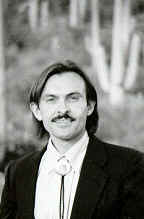The food at Boole Poole is continuous and one meal runs into the next. Looking for an alternative to eating, I decided to interview Miriam, the newest physician to work for the Aboriginal Cooperative and their first and only full-time physicians. My colleague, Rocky, had already spent time with her on his last journey to Australia when he consulted to the physicians who worked for the Cooperative. The rain drummed on the roof as we talked in the living room of the house while most everyone else watched films of aboriginal dancing from the community at Mullingimby, the home of Shadow and Lily.
"How long have you been at the Coop now?" I asked.
"Since last August, 2011. Now, it's six months." Miriam answered. She had trained in Brazil and had practiced for some time with aboriginal people there. In Brazil she had a catchment area of 4000 people. She worked for the public medical care system. In her clinic, she had four health workers, one nurse, and her. I wondered how it was to have that many families under your care. She said it was a matter of doing the match. In any given month, one expects 4% acute care visits. She used the morbidity tables for the percentages of chronic diseases in her practice to calculate how much time to allocate for chronic disease care. Time was very scientifically managed. Next I asked her what was her biggest challenge in coming to the Coop in her first week.
"My first week was one of introductions and cultural awareness. I was taken to the different sites I needed to know about; taken to meet the people with whom I would be working and whom I would be calling. They (the coop) introduced me to elders. That first week was also an introduction for the community to me. It was a pleasure. They believed it was fundamental for me to understand the geographical space in which the patients lived. They were open to all my questions. They introduced me to all the places that were important to know. The two aboriginal health workers did that -- Shane and Judi Ann. Judi worked with the midwife and could bring her all the issues with pregnancies in young people and what they need, their expectations. That was my first week." I was impressed with how culturally sensitive the Coop was to Miriam. I hoped we had contributed something to that awareness. Then I asked Miriam about her second week.
"During my second week I was in the unit of my mentor, Dr. Jane Greason. She was able to introduce me to the program and what they had been doing in the community. She has been there more than 12 years." Then I asked her what other doctors work for the Coop.
"Dr. Greason is my supervisor. There is Dr. Gene Wofurt who was raised in Bairnsdale, then Dr. Schoefeld, and Dr. Black. We have two offices at the health center. Usually only one session or two sessions occur at the same time." I learned that the other doctors had contracts with the Coop and did their own billings. Miriam was on a salary.
"My challenge is, not by the production, but to help people get well. I am not billing medicare like the other doctors who have to see patients one after the other, 1, 2, 3, 4. I have A, B, and C consultations. An A consultation is scheduled for 10 to 15 minutes. B is 40 minutes and C is one hour. Because we have the other doctors, if I have another doctor at the unit, the other doctor does their patients and I do the health assessments with the aboriginal health worker and do the gp planning." I hadn't heard the term "gp planning" so I asked what that was. Assessments are always category C consultations.
"After the assessment, you have at least some idea of the risk factors, medications, and social information. That supports the gp planning. We identify the patients with the chronic disease and the special needs. After that, you have to work in a way that you agree with the patients and negotiate with them what can be done and how. We set some goals between us. I have to write this down. That is the product we call GP planning. The Coop is a very special situation because they have more than just general practice. They have the family service, the alcohol and drugs follow-up, the midwifery service, and many more community outreach services. With these special services, it's easier for us to go further than a simple gp plan in mainstream medicine. There they have hard work because they don't have the facilities to refer as I have here.




